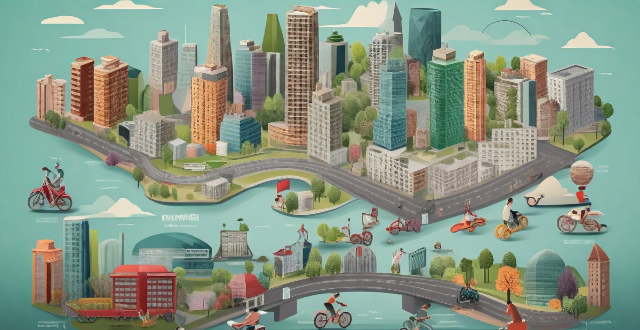Cities worldwide utilize sports for urban branding and marketing to enhance global reputation, attract tourists, and boost economic development. Major strategies include hosting major sporting events, constructing iconic sports venues, sponsorship and partnerships, and grassroots and community sports programs. This approach combines economic development, community engagement, and global outreach, offering unique experiences, world-class facilities, and vibrant sports cultures to enhance a city's appeal to visitors, investors, and potential residents.

How Cities Utilize Sports for Urban Branding and Marketing
Introduction
Cities worldwide are leveraging sports as a potent tool for urban branding and marketing. By hosting sporting events or building iconic sports facilities, cities aim to enhance their global reputation, attract tourists, and boost economic development. This strategy not only focuses on the short-term benefits of an event but also aims at long-term brand positioning and community engagement.
Major Strategies
1. Hosting Major Sporting Events
- Global Attention: Cities bid to host Olympics, World Cups, and other international competitions to capture global attention. This exposure often leads to increased tourism and foreign investment.
- Economic Impact: The influx of visitors during these events brings significant revenue to local businesses, from hotels and restaurants to transportation services.
- Infrastructure Development: Preparing for major events often involves upgrading city infrastructure, which benefits residents long after the event concludes.
2. Construction of Iconic Sports Venues
- Architectural Statements: Stadiums and arenas become landmarks that symbolize the city's commitment to sports and entertainment.
- Attraction for Tourists: These venues become must-visit sites for sports enthusiasts and architecture buffs alike.
- Community Hubs: Modern sports facilities are designed to serve multiple purposes, including concerts, conventions, and community events.
3. Sponsorship and Partnerships
- Brand Association: Cities partner with sports teams or events to associate their brand with success, energy, and prestige.
- Marketing Opportunities: These partnerships offer platforms for city promotion through team merchandise, advertising, and media coverage.
- Economic Spin-offs: Local businesses benefit from sponsorship deals that bring more consumers to shops, restaurants, and entertainment venues.
4. Grassroots and Community Sports Programs
- Youth Engagement: By investing in youth sports programs, cities foster a sense of community and pride among young people.
- Healthy Lifestyle Promotion: Encouraging sports participation helps promote a healthy lifestyle, reducing healthcare costs and increasing productivity.
- Talent Development: Strong grassroots programs can develop local sporting talents that bring further recognition to the city.
Conclusion
The strategic use of sports in urban branding and marketing is a multifaceted approach that combines economic development, community engagement, and global outreach. By offering unique experiences, world-class facilities, and vibrant sports cultures, cities can significantly enhance their appeal to visitors, investors, and potential residents. This not only boosts the economy but also improves the quality of life for their citizens.